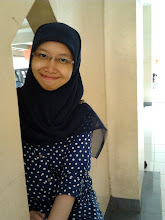Knowledge Map
| click here |
This link is a knowledge map in my class :
| click here |
it's my blog.. let's share our knowledge ! more sharing, more and more increasing in our knowledge :)
| click here |
| click here |
Chapter 6

Chapter 5
Chapter 4
 Besides the U.S. and Russia, China also has warned Israel not to attack Iran. Therefore, the move would lead to severe consequences not only for the Middle East, but for the whole world.
Besides the U.S. and Russia, China also has warned Israel not to attack Iran. Therefore, the move would lead to severe consequences not only for the Middle East, but for the whole world.

 |
| in busway, trip to National Museum |
 |
| the ticket for busway and the museum |
Differences between data, information, and knowledge:
Data is a collection of facts that represent an event. Data can also be interpreted as the very small / basic of human work. Data is rigid/ static.
Information is the result of processing / processing the data collected and have a picture or a clear sense of a particular context.information is dynamic. Everyone has a different response to the information.
Knowledge is the result of processing the information so useful. in addition, knowledge can also be regarded as information that is integrated and interpreted. Knowledge derived from information which is absorbed in one's reasoning, as well as transcendent.
For example:
Data: 200 motor vehicles were passing lane Parung this morning.
Information: Parung lane of traffic congestion experienced in the morning.
Knowledge: motorists should take alternate routes, such as Sawangan.
reference: http://blogs.unpad.ac.id/eddynurmanto/2007/06/20/data-informasi-dan-pengetahuan/
What's the Real Reason Behind High Oil Prices?
Oil prices are set by commodities traders who buy and sell futures contracts on the commodities exchanges.These are agreements to buy or sell oil at a specific date in the future at a specific price. Commodities traders can create a self-fulfilling prophecy by bidding up oil futures prices. Once this starts, it can create an asset bubble. Unfortunately, the one who pays for this bubble is you!
Like most of the things you buy, oil prices are affected by supply and demand. However, oil prices are also affected by oil price futures, which are traded on the commodities futures exchange. These prices fluctuate daily, depending on what investors think the price of oil will be in the future. When traders think oil will be high, they bid it up even higher. This soon causes rising gas prices.
What Makes High Gas Prices Go Down?
The summertime vacation driving season usually increases gas prices by an average of ten cents per gallon. This price increase is despite the increased use of ethanol. Gas prices usually go down in the winter, since transportation needs are lower. This even offsets an increase in oil usage for winter heating in the Northeast U.S.
What Can We Do About Rising Gas Prices?
The most immediate thing we can do is reduce our usage of gas, either through driving less or increasing fuel efficiency. Surprisingly, the best way to increase fuel efficiency is to keep tires inflated.
Another reason for rising oil prices is the declining dollar. Since oil is denominated in dollars, the 40% decline in the dollar in the last six years puts upward pressure on oil prices. (Source: BBC, Oil Price May Hit $200 a Barrel, May 7, 2008)
Sometimes commodities traders drive up the price of oil, even when supply increases and demand falls. The EIA cited an increased flow of investment money into commodities markets. In other words, money that used to be invested in real estate or the global stock market is now being invested in oil futures. For more on the factors commodities traders use, see How Are Oil Prices Determined? (Source: EIA Short-Term Energy Outlook)
Longer term, we can change our need for oil and gas by switching to alternative fuel vehicles, using public transit and moving closer to work to reduce commuting time. This will reduce the impact of gas prices on each of us individually by reducing use.
Could this reduction in itself reduce gas prices? It could, if it could reduce demand for oil enough to lower oil prices. It would have to happen on a sustained basis over a long period of time. That's because gasoline accounts for only 20% of each barrel of oil. Oil companies would still profit from the non-gasoline parts of their business. Therefore, even if consumers could conceivably stop 100% of gasoline use, oil prices might only decline 20%.
Thank you very much for view my blog :)
